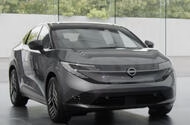Nissan is gearing up to unveil the third generation of its iconic Leaf later this month, and anticipation is building as details emerge about this revamped electric vehicle. Set to hit the market by the end of the year, the new Leaf promises to blend innovation with the brand’s rich history in electric mobility.
What’s New with the 2025 Nissan Leaf?
The upcoming Leaf is not just a facelift; it represents a significant shift in design and functionality. Traditionally a hatchback, the new Leaf adopts a crossover style, tapping into the growing consumer preference for higher-riding vehicles. This transformation is part of Nissan’s strategy to stay relevant in a rapidly evolving automotive landscape, where electric vehicles (EVs) are becoming the norm rather than the exception.
Nissan has confirmed that the Leaf will be produced at its Sunderland factory, alongside the next-generation Juke. This strategic move not only streamlines production but also emphasizes Nissan’s commitment to its UK operations. The Leaf has been a cornerstone of Nissan’s electric lineup, with around 700,000 units sold since its debut in 2010, covering over 28 billion kilometers driven by customers worldwide. This wealth of data has informed the design and development of the new model, ensuring it meets the evolving needs of today’s drivers.
How Does the New Leaf Improve on Previous Models?
One of the standout features of the new Leaf is its enhanced aerodynamic efficiency. With a coefficient of drag reduced to 0.25, down from the previous generation’s 0.28, this model is designed to slice through the air more effectively. This improvement is not just for show; it plays a crucial role in achieving a claimed maximum range of 372 miles. While Nissan is still tight-lipped about specific battery specifications, the aerodynamic design is likely to be a key factor in maximizing efficiency.
Additionally, the Leaf will offer an innovative electrochromic dimming panoramic roof. This feature allows for heat shielding without the need for physical blinds, preserving headroom for passengers while enhancing comfort. It’s these thoughtful touches that reflect Nissan’s commitment to practicality and user experience.
What Can We Expect Inside the New Leaf?
Inside, the Leaf is set to impress with a modern, tech-savvy interior. Nissan’s global design chief, Alfonso Albaisa, describes the new Leaf as “democratizing technology.” The cabin will feature the latest in-car systems powered by Nissan’s updated Car and Connected Service (CCS) platform, which includes a Google-based infotainment system and advanced driver assistance features. This focus on technology aims to make driving easier and more enjoyable, aligning with the needs of today’s tech-savvy consumers.
François Bailly, Nissan’s European product boss, emphasizes that the Leaf has been developed with a focus on “real-world range.” This practical approach is crucial for drivers who want to know how far they can travel on a single charge, especially on long highway journeys. The Leaf’s design is not just about aesthetics; it’s about functionality and ensuring that drivers can confidently plan their trips without range anxiety.
Why the Shift to a Crossover Design Matters
The shift from a traditional hatchback to a crossover design is significant. It reflects broader trends in the automotive market, where consumers increasingly favor SUVs and crossovers for their versatility and perceived safety. By adapting to these preferences, Nissan is positioning the Leaf to attract a wider audience, including those who may have previously overlooked electric vehicles.
This move also highlights Nissan’s understanding of market dynamics. As electric vehicles become more mainstream, the competition is intensifying. By offering a stylish, practical, and tech-forward crossover, Nissan aims to stand out in a crowded field, particularly against rivals like the Skoda Elroq.
Looking Ahead: What’s Next for the Leaf?
As we await the full reveal of the 2025 Nissan Leaf, it’s clear that this model is poised to make a significant impact in the EV market. With its blend of innovative design, advanced technology, and practical features, the new Leaf is not just about keeping up with the competition; it’s about setting new standards for what electric vehicles can offer.
The big takeaway? The evolution of the Leaf isn’t just about aesthetics or range; it’s about understanding and responding to the needs of modern drivers. As we move closer to its launch, keep an eye on how this new model will redefine expectations for electric vehicles. Start thinking about how you might incorporate an electric vehicle into your life, and you might just find that the future of driving is more exciting than ever.

